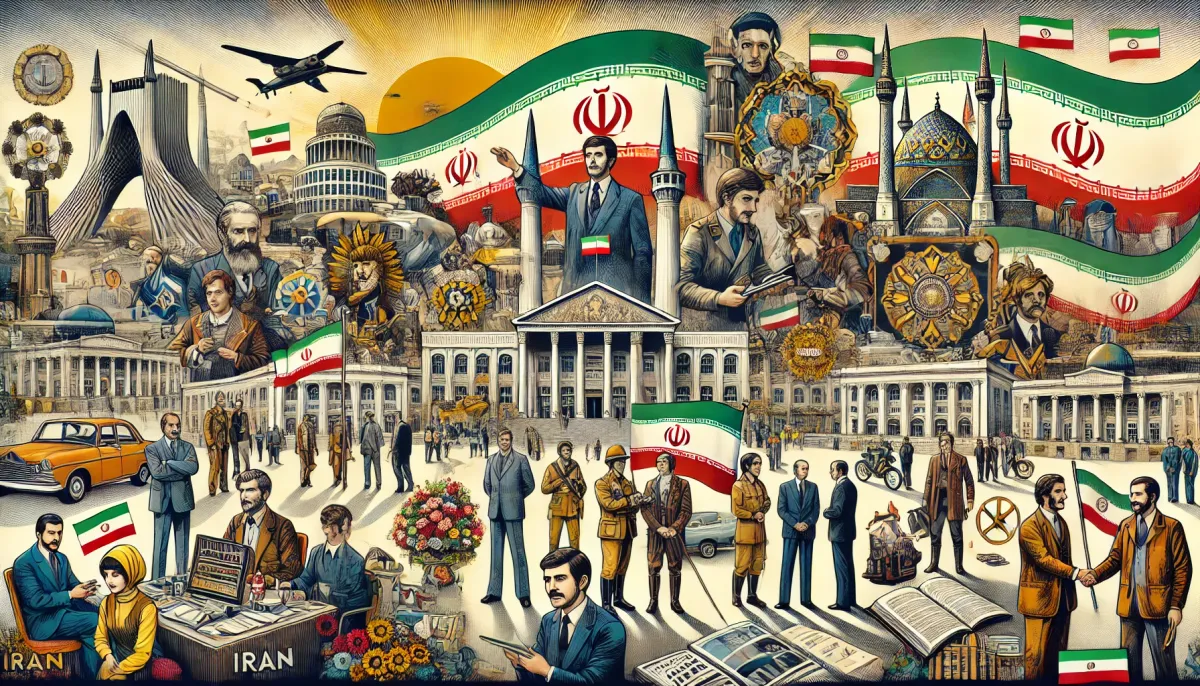

By Dr. Tim Orr
Imagine living in a country where rapid modernization and strict authoritarian rule collide, creating a storm of discontent. This was Iran under the Shah. The subsequent Islamic Revolution 1979 turned everything upside down, drastically changing the nation's political and social landscape. Let's explore how these events unfolded through personal stories and critical moments that shaped modern Iran.
Summary
This blog delves into the significant events of the Shah’s authoritarian rule and the 1979 Islamic Revolution in Iran. It highlights how the Shah’s efforts to modernize the country led to widespread dissatisfaction, ultimately resulting in the revolution led by Ayatollah Khomeini. The new Islamic Republic brought strict religious laws, severe repression, and mass executions, impacting the lives of ordinary Iranians. Through personal stories and key historical moments, the article provides a comprehensive overview of these pivotal events and their lasting impact on Iran.
The Shah’s Authoritarian Rule
Mohammad Reza Shah Pahlavi's rule, starting in 1941, was marked by ambitious modernization. He built roads, schools, and industries, hoping to propel Iran into the future (Milani, 2011). But his heavy-handed tactics, enforced by his secret police, SAVAK, created fear and stifled dissent (Abrahamian, 1982).
One such story is of Parviz, a university professor in Tehran. At first, he supported the Shah’s vision, believing it would bring prosperity. However, as the regime grew more oppressive, Parviz saw friends and colleagues being arrested for merely speaking out. This oppressive environment turned many supporters into critics (Mackey, 1996).
The Shah's push for Westernization alienated many Iranians. Traditionalists, the clergy, and the working class felt their culture and values were under attack (Ansari, 2003). For instance, Fatemeh, a traditional shopkeeper, felt her way of life was being erased by the Shah’s policies, which demanded Western attire and behaviors.
Islamic Revolution
By the late 1970s, frustration with the Shah had peaked. Ayatollah Ruhollah Khomeini led the revolution, uniting diverse opposition groups with a promise of an Islamic government (Keddie, 2006). His message resonated with those who felt betrayed by the Shah’s regime.
In 1979, the Islamic Revolution successfully overthrew the Shah, establishing the Islamic Republic of Iran. A young revolutionary, Ali recalls the initial joy of victory and the hope for a just government. However, this hope soon turned to disappointment (Arjomand, 1988).
Khomeini’s new regime merged religious and political authority, imposing strict Islamic laws and curbing personal freedoms (Moin, 2000). Women faced harsh restrictions. Leyla, who once celebrated the revolution, was forced into strict dress codes and lost many freedoms she had enjoyed before.
The Dark Side: Executions and Repression
The new government was also brutal in consolidating its power. Farhad, a former revolutionary guard, shared stories of mass executions meant to eliminate opposition (Afary, 2009). The early years of the Islamic Republic saw a wave of executions that targeted political opponents, intellectuals, and anyone perceived as a threat to the new regime (Axworthy, 2013).
Ebrahim, a journalist, witnessed friends and colleagues being taken away by the authorities, never to be seen again. These mass executions were often carried out in secret, with families sometimes only notified of their loved ones' deaths long after they had been buried in unmarked graves (Ganji, 2008).
The most infamous period of executions it occurred in 1988, when thousands of political prisoners were executed over a few months (Alam, 1991). This purge targeted members of opposition groups, including the People’s Mojahedin Organization of Iran (PMOI), leftists, and other dissenters. Shirin, whose brother was among those executed, recalls the anguish and fear that gripped families across Iran (Mackey, 1996).
The regime's brutality extended to women as well. The revolutionary courts often handed down harsh sentences for moral transgressions. Women's rights activists, like Nasrin, faced severe punishment for advocating for gender equality (Paidar, 1995).
Conclusion
The Shah’s reign and the Islamic Revolution were transformative periods for Iran. The Shah’s modernization, though well-intentioned, was marred by authoritarianism, leading to widespread discontent. The Islamic Revolution promised change but brought its form of repression. The mass executions and suppression of dissent during the early years of the Islamic Republic cast a long shadow over the country. Understanding these events helps us appreciate the complexities of Iran's history and its ongoing struggle for freedom and justice.
References
Abrahamian, E. (1982). Iran between two revolutions. Princeton University Press.
Afary, J. (2009). Sexual politics in modern Iran. Cambridge University Press.
Alam, A. (1991). The Shah and I: The confidential diary of Iran's royal court, 1969-1977. I.B. Tauris.
Ansari, A. (2003). Modern Iran: The Pahlavis and after. Pearson Education.
Arjomand, S. A. (1988). The Turban for the Crown: The Islamic revolution in Iran. Oxford University Press.
Axworthy, M. (2013). Revolutionary Iran: A history of the Islamic Republic. Oxford University Press.
Ganji, M. (2008). Defying the Iranian revolution: From a minister to the Shah to a leader of resistance. Praeger.
Keddie, N. R. (2006). Modern Iran: Roots and results of revolution. Yale University Press.
Mackey, S. (1996). The Iranians: Persia, Islam and the soul of a nation. Penguin Books.
Milani, A. (2011). The Shah. Palgrave Macmillan.
Moin, B. (2000). Khomeini: Life of the Ayatollah. I.B. Tauris.
Paidar, P. (1995). Women and the political process in twentieth-century Iran. Cambridge University Press.
